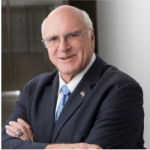A Deeper Look at the New Quantum Computing Program Launched by the Novo Nordisk Foundation

While quantum computing is slowly penetrating various industries, both the life sciences and healthcare industries may take a much longer time. This is in part due to the complexities in each industry, especially in medicine. As patients’ lives and overall health are on the line, many quantum companies are taking extra measures to ensure their technology can provide benefits. The Novo Nordisk Foundation, based in Denmark, has recently pledged $200 million toward developing the next generation of quantum computers specifically for the life sciences, helping to accelerate this process. As the Foundation supports various companies and grants throughout the Nordic region, its new quantum program will no doubt inspire others in this area to look into this technology further.

Novo Nordisk Foundation Senior Vice President Lene Oddershede discusses the new quantum computing program. (PC Novo Nordisk Foundation)
“This is a long-term program,” explained Novo Nordisk Foundation’s Senior Vice President Lene Oddershede. “Although we have so far only funded the first seven years, the timeframe is actually 12 years.” Oddershede’s extensive history in quantum science makes her a perfect leader to help contribute to this program. In 2003, Oddershede became a tenured professor and lead researcher at the Niels Bohr Institute at the University of Copenhagen. While researching optical tweezers, a key tool for extending quantum physics to the life sciences, Oddershede led several interdisciplinary projects. She hopes to channel her passion for interdisciplinary research into this new quantum program.
To achieve its goal of building a quantum computer, the Novo Nordisk Foundation will partner with the University of Copenhagen. This program will also host world-leading experts from Canada, the U.S., Denmark, and the Netherlands. “The mission is to build a fault-tolerant quantum computer,” Oddershede said. “And hopefully the bulk of the work will take place within the first seven years. In the program, there will be researchers from the life sciences who will work side by side with the physicists.” Oddershede hopes that this community of researchers will create a type of feedback loop. “So first it’s the hardware, the electronics, and the software,” she added. “And then there will actually be real experiments with biological molecules. Then the experts will try to make calculations on those systems, and the experiences from that will feed again into the development of the hardware and software.”
Unlike other quantum computing programs, this program will also test three different qubit platforms. “There will be spin qubits, there’ll be superconducting qubits, and there’ll be photonic qubits,” said Oddershede. “But we will let time evolve until the choice is made on what optimal platform to continue with us, because there’s so much worldwide development in this space.”
As the Novo Nordisk Foundation focuses on health, sustainability, and the life sciences, the goal is to directly benefit the healthcare industry specifically with this new technology. “You can say that the healthcare system, in our setup, works as a pull for developing technologies,” Oddershede elaborated. “We have actually integrated this pull into the construction of the program. When we move a little bit further down the line, our team is going to work side by side with doctors, on, for instance, personalized medicine.” Thanks to new quantum programs like the Novo Nordisk Foundation’s, quantum computing may not take as long to be beneficial to the healthcare and life sciences industries.
Kenna Hughes-Castleberry is a staff writer at Inside Quantum Technology and the Science Communicator at JILA (a partnership between the University of Colorado Boulder and NIST). Her writing beats include deep tech, the metaverse, and quantum technology.



















